CASES WE SEE
Hyperventilation
Asthma
COVID-19
COPD
Sarcoidosis
Chronic bronchitis
Pneumonia
Chronic cough
Low oxygen
Low CO2
MORE INFO
The natural breathing can be hijacked by stress over time. Volitional breathing behaviors, leading to CO2 depletion, cause airway resistance, inflammation, effort in breathing, and respiratory problems.
WHAT WE DO
We offer specialized intervention using cardiorespiratory biofeedback. Our goal is to help you restore and improve the quality of your breathing, reduce symptom severity, and improve quality of life. We offer a revolutionary preventative and no-invasive intervention for respiratory function.
CO2 and Why It Matters
CO2 is often misunderstood as a mere "waste gas," but in reality, it is the very key regulator of oxygen delivery, nervous system stability, and cellular function.
Oxygen Delivery Depends on CO2 Regulation. The right amount of CO2 allows the hemoglobin to release oxygen efficiently to the brain, muscles, and organs.
CO2 Controls Nervous System Balance. CO2 helps modulate the autonomic nervous system, shifting from stress (sympathetic) to recovery (parasympathetic) states.
CO2 Prevents Airway Instability. When CO2 levels are balanced, the airways maintain good tone, stay open, relaxed, and properly supported. CO2 balance helps prevent the throat from becoming too tigh or too floppy, reducing the risk of narrowing, and causing obstructive sleep apnea and upper airway resistance syndrome.
CO2 Influences pH & Blood Flow. Maintaining optimal CO2 level stabilizes blood pH, preventing symptoms like unexplained breathlessness, air-hunger, anxiety, depression, excessive yawning, dizziness, chronic fatigue, exhaustion, muscle tension, muscle pain, sleep disturbances, disorientation, confusion, muscle weakness, heart rhythm irregularities, concentration and memory problems.
Correcting CO2 depletion is the most powerful physiological intervention for breathing dysfunction and nervous system dysregulation.
What is Silent Hyperventilation?
Definition: Chronic silent hyperventilation (sometimes called "hidden hyperventilation") is a condition where you breathe slighlty faster or deeper than required, leading to excessive CO2 depletion.
Common Misconception: Many people associate hyperventilation with obvious panting or breathlessness. However, "silent" hyperventilation can be subtle, making it harder to detect.
How Stress Silently Affects Your Breathing
THE STRESS-BREATHING CONNECTION
Breathing is the most fragile system in the body. Emotions, memories, traumatic events, and chronic stress can disrupt the body's natural respiratory mechanics, leading to poor lung function, inefficient oxygen exchange, and long-term respiratory complications.
Breathing is unique because it is one human system that has the capacity to affect all other systems at once, thus compromising health and aggravating other existing respiratory conditions. Breathing behaviors, patterns learned and reinforced by chronic stress, is an area of medicine and rehabilitation that is often overlooked.
When breathing patterns are chronically dysfunctional, the lungs become ineffective at oxygenating the body, and the heart pump weakens, overall affecting lung compliance and blood circulation. Dyfunctional breathing can result in CO2 imbalance, contributing to a range of health issues, including respiratory distress, inflammation, reduced lung capacity, and increase the effort of breathing.
Understanding Carbon Dioxide Imbalance
BREATHING IN EXCESS - LEARNED BEHAVIORS
Chronic silent hyperventilation-often overlooked because it can occur without obvious symptoms-refers to a subtle but persistent state of over-breathing. Although individuals may not notice they are breathing more than necessary, this inadequate breathing pattern can disrupt the delicate balance of oxygen (O2) and carbon dioxide (CO2) in the bloodstream.
Over time, these imbalances may contribute to a host of health issues, from heightened stress response, compromised lung function, to medically unexplained shortness of breath. Poor breathing habits stresses the body, altering all organ systems and compromising health.
Low CO2 (hypocapnia) Effect On Respiratory System
Decreased Oxygen
Breathlessness
Air Hunger
Chest Tightness
Atypical Ashtma
Wheezing, Narrow Airways
Cough Syndrome
Fatigue
Lung Injury
Respiratory Failure
Respiras Breathing Method
Focuses on correcting CO2 balance & oxygen efficiency to optimize physiology and the proper functioning of the body.
Rooted on respiratory physiology, Bohr Effect, Henderson & Hasselbalch equation of balancing pH, optimizing the proper release of oxygen for cellular function, and improving nervous system regulation.
Used for functional occupational performance (physical, mental, emotional), and stress adaptation, to increase calm energy, focus, and endurance.
Acknowledges the potential presence of respiratory, cardiac, and other organic diseases. Encourages proper medical assessment to rule out major organic pathology. Addresses each person individually and considers pre-existing medical conditions.
Avoids the potential harmful effect of deep breathing, causing CO2 depletion, leading to respiratory alkalosis, leading to oxygen starvation and brain hypoxia- temporarily altering the cognitive state into dissociation or disconnectedness.
Focus on CO2 regulation from a multi-sensory approach involving all senses, cardio-pulmonary capacity, postural retraining, motor coordination, vestibular, oculo-motor coordination, and functional mobility.




